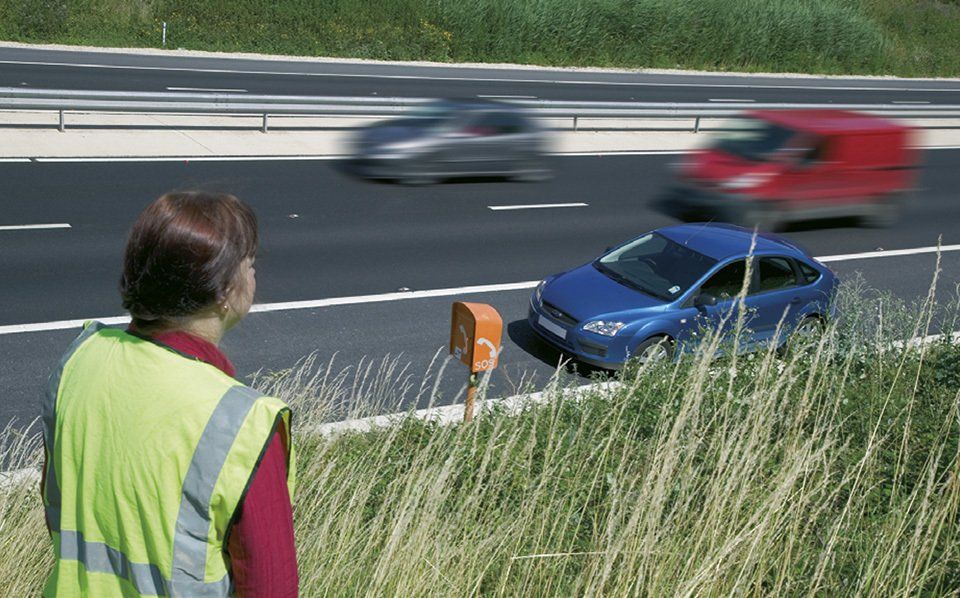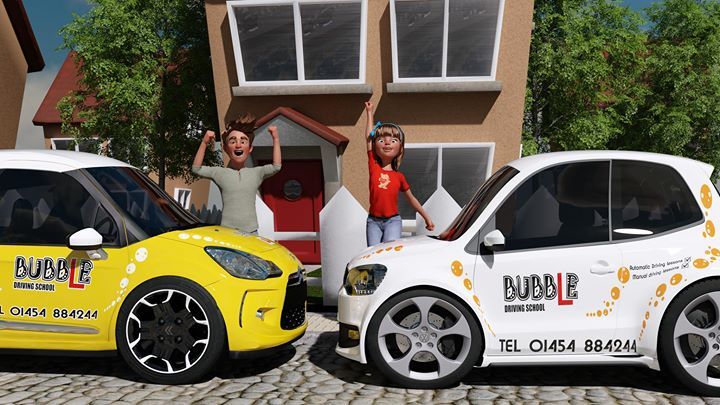Limited lessons available
Author name
Rules 274-287
Breakdowns an incidents.
Rules for breakdowns and incidents, including rules for motorways, obstructions, incidents, incidents involving dangerous goods and documents.
Carrying on on our highway code series in this blog well be looking at breakdons and incidents.
The highway code can be bought in shops and online, as well as a free version on the UK goverments website, click here to access the free to use highway code.
And for people wanting a more visual highway code or those who struggle with the technical talk, the Colour Book Academy offer a great new highway code, that allows you to colour in but every rule of the highway code is explained with diagrams and scenario's for each and every rule, this is a great resource for those wanting something abit more fun with learning. Click here to order yours today.
Breakdowns
Rule 274
If your vehicle breaks down, think first of all other road users and
Additional rules for motorways
Rule 275
If your vehicle develops a problem, leave the motorway at the next exit or pull into a service area. If you cannot do so, you should:
Laws MT(E&W)R reg 14 & MT(S)R reg 12
The highway code can be bought in shops and online, as well as a free version on the UK goverments website, click here to access the free to use highway code.
And for people wanting a more visual highway code or those who struggle with the technical talk, the Colour Book Academy offer a great new highway code, that allows you to colour in but every rule of the highway code is explained with diagrams and scenario's for each and every rule, this is a great resource for those wanting something abit more fun with learning. Click here to order yours today.
Breakdowns
Rule 274
If your vehicle breaks down, think first of all other road users and
- get your vehicle off the road if possible
- warn other traffic by using your hazard warning lights if your vehicle is causing an obstruction
- help other road users see you by wearing light-coloured or fluorescent clothing in daylight and reflective clothing at night or in poor visibility
- put a warning triangle on the road at least 45 metres (147 feet) behind your broken-down vehicle on the same side of the road, or use other permitted warning devices if you have them. Always take great care when placing or retrieving them, but never use them on motorways
- if possible, keep your sidelights on if it is dark or visibility is poor
- do not stand (or let anybody else stand) between your vehicle and oncoming traffic
- at night or in poor visibility do not stand where you will prevent other road users seeing your lights
Additional rules for motorways
Rule 275
If your vehicle develops a problem, leave the motorway at the next exit or pull into a service area. If you cannot do so, you should:
- pull on to the hard shoulder and stop as far to the left as possible, with your wheels turned to the left
- try to stop near an emergency telephone (situated at approximately one-mile intervals along the hard shoulder)
- leave the vehicle by the left-hand door and ensure your passengers do the same. You MUST leave any animals in the vehicle or, in an emergency, keep them under proper control on the verge. Never attempt to place a warning triangle on a motorway
- do not put yourself in danger by attempting even simple repairs
- ensure that passengers keep away from the carriageway and hard shoulder, and that children are kept under control
- walk to an emergency telephone on your side of the carriageway (follow the arrows on the posts at the back of the hard shoulder) – the telephone is free of charge and connects directly to an operator. Use these in preference to a mobile phone (see Rule 283). Always face the traffic when you speak on the phone
- give full details to the operator; also inform them if you are a vulnerable motorist such as disabled, older or travelling alone
- return and wait near your vehicle (well away from the carriageway and hard shoulder)
- if you feel at risk from another person, return to your vehicle by a left-hand door and lock all doors. Leave your vehicle again as soon as you feel this danger has passed.
Laws MT(E&W)R reg 14 & MT(S)R reg 12
Rule 275: Keep well back from the hard shoulder
Rule 276
Before you rejoin the carriageway after a breakdown, build up speed on the hard shoulder and watch for a safe gap in the traffic. Be aware that other vehicles may be stationary on the hard shoulder.
Rule 277
If you cannot get your vehicle onto the hard shoulder
Rule 278
Disabled drivers. If you have a disability which prevents you from following the above advice you should
Rule 279
If anything falls from your vehicle (or any other vehicle) on to the road, stop and retrieve it only if it is safe to do so.
Rule 280
Motorways. On a motorway do not try to remove the obstruction yourself. Stop at the next emergency telephone and call for help.
Incidents
Rule 281
Warning signs or flashing lights. If you see or hear emergency or incident support vehicles in the distance, be aware there may be an incident ahead (see Rule 219). Police officers and traffic officers may be required to work in the carriageway, for example dealing with debris, collisions or conducting rolling road blocks. Police officers will use rear-facing flashing red and blue lights and traffic officers will use rear-facing flashing red and amber lights in these situations. Watch out for such signals, slow down and be prepared to stop. You MUST follow any directions given by police officers or traffic officers as to whether you can safely pass the incident or blockage.
Laws RTA 1988 sects 35 & 163 as amended by TMA sect 6
Rule 282
When passing the scene of an incident or crash do not be distracted or slow down unnecessarily (for example if an incident is on the other side of a dual carriageway). This may cause a collision or traffic congestion, but see Rule 283, below.
Rule 283
If you are involved in a crash or stop to give assistance
Incidents involving dangerious goods
Rule 284
Vehicles carrying dangerous goods in packages will be marked with plain orange reflective plates. Road tankers and vehicles carrying tank containers of dangerous goods will have hazard warning plates (see ‘Vehicle markings’).
Rule 285
If an incident involves a vehicle containing dangerous goods, follow the advice in Rule 283 and, in particular
Documentation
Rule 286
If you are involved in a collision which causes damage or injury to any other person, vehicle, animal or property, you MUST
Law RTA 1988 sect 170
Rule 287
If another person is injured and you do not produce your insurance certificate at the time of the crash to a police officer or to anyone having reasonable grounds to request it, you MUST
Law RTA 1988 sect 170
Check back Wednesday for our next part in our series.
The highway code printed is from the uk goverment website and under its open goverment licence, allows anyone to copy and share the code.
Rule 276
Before you rejoin the carriageway after a breakdown, build up speed on the hard shoulder and watch for a safe gap in the traffic. Be aware that other vehicles may be stationary on the hard shoulder.
Rule 277
If you cannot get your vehicle onto the hard shoulder
- do not attempt to place any warning device on the carriageway
- switch on your hazard warning lights
- leave your vehicle only when you can safely get clear of the carriageway.
Rule 278
Disabled drivers. If you have a disability which prevents you from following the above advice you should
- stay in your vehicle
- switch on your hazard warning lights
- display a ‘Help’ pennant or, if you have a car or mobile telephone, contact the emergency services and be prepared to advise them of your location.
Rule 279
If anything falls from your vehicle (or any other vehicle) on to the road, stop and retrieve it only if it is safe to do so.
Rule 280
Motorways. On a motorway do not try to remove the obstruction yourself. Stop at the next emergency telephone and call for help.
Incidents
Rule 281
Warning signs or flashing lights. If you see or hear emergency or incident support vehicles in the distance, be aware there may be an incident ahead (see Rule 219). Police officers and traffic officers may be required to work in the carriageway, for example dealing with debris, collisions or conducting rolling road blocks. Police officers will use rear-facing flashing red and blue lights and traffic officers will use rear-facing flashing red and amber lights in these situations. Watch out for such signals, slow down and be prepared to stop. You MUST follow any directions given by police officers or traffic officers as to whether you can safely pass the incident or blockage.
Laws RTA 1988 sects 35 & 163 as amended by TMA sect 6
Rule 282
When passing the scene of an incident or crash do not be distracted or slow down unnecessarily (for example if an incident is on the other side of a dual carriageway). This may cause a collision or traffic congestion, but see Rule 283, below.
Rule 283
If you are involved in a crash or stop to give assistance
- use your hazard warning lights to warn other traffic
- ask drivers to switch off their engines and stop smoking
- arrange for the emergency services to be called immediately with full details of the incident location and any casualties (on a motorway, use the emergency telephone which allows easy location by the emergency services. If you use a mobile phone, first make sure you have identified your location from the marker posts on the side of the hard shoulder)
- move uninjured people away from the vehicles to safety; on a motorway this should, if possible, be well away from the traffic, the hard shoulder and the central reservation
- do not move injured people from their vehicles unless they are in immediate danger from fire or explosion
- do not remove a motorcyclist’s helmet unless it is essential to do so
- be prepared to give first aid
- stay at the scene until emergency services arrive.
Incidents involving dangerious goods
Rule 284
Vehicles carrying dangerous goods in packages will be marked with plain orange reflective plates. Road tankers and vehicles carrying tank containers of dangerous goods will have hazard warning plates (see ‘Vehicle markings’).
Rule 285
If an incident involves a vehicle containing dangerous goods, follow the advice in Rule 283 and, in particular
- switch off engines and DO NOT SMOKE
- keep well away from the vehicle and do not be tempted to try to rescue casualties as you yourself could become one
- call the emergency services and give as much information as possible about the labels and markings on the vehicle. DO NOT use a mobile phone close to a vehicle carrying flammable loads.
Documentation
Rule 286
If you are involved in a collision which causes damage or injury to any other person, vehicle, animal or property, you MUST
- stop
- give your own and the vehicle owner’s name and address, and the registration number of the vehicle, to anyone having reasonable grounds for requiring them
- if you do not give your name and address at the time of the collision, report it to the police as soon as reasonably practicable, and in any case within 24 hours.
Law RTA 1988 sect 170
Rule 287
If another person is injured and you do not produce your insurance certificate at the time of the crash to a police officer or to anyone having reasonable grounds to request it, you MUST
- report it to the police as soon as possible and in any case within 24 hours
- produce your insurance certificate for the police within seven days.
Law RTA 1988 sect 170
Check back Wednesday for our next part in our series.
The highway code printed is from the uk goverment website and under its open goverment licence, allows anyone to copy and share the code.





